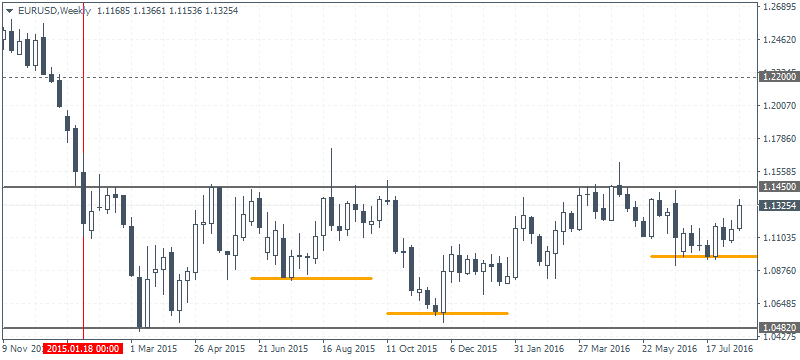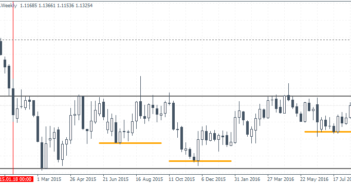The ECB’s monetary policy meeting minutes from the July meeting was released last week. Although the event was overshadowed by the FOMC minutes and Fed member speeches, the minutes gave some insights into the future course of action from the ECB.
Policy makers warned that following Britain’s vote to leave the European Union; fresh headwinds for the eurozone could affect the world economy. The markets took this as an early signal from the ECB that fresh stimulus could be launched in the near future to shore up the economy. However, the minutes also showed that while policy makers were concerned, they felt that such measures were a bit too soon and preferred to wait for more evidence of the economic disruption from the Brexit vote. The ECB is due to meet next on September 8. The ECB’s stimulus program currently stands at 1.8 trillion euros which the central bank expanded for the third time.
“There was wide agreement that downside risks to the economic outlook for the euro area had increased, mainly owing to the outcome of the UK referendum. In this respect, available estimates of the impact on euro area growth over the coming years were noted, but it was also recognised that such estimates were subject to a great deal of uncertainty and that the situation called for caution in assessing future developments. At the same time, it was perceived that the reaction of financial markets in the euro area had been more contained than could have been expected, both in the initial responses and in the partial reversals that took place afterwards,” the meeting minutes showed.
The July monetary policy meeting was a non-event as the ECB left policy unchanged. During the press conference, President Draghi stopped short of signaling further expansion to the central bank’s QE program. Back then, he urged to be patient to see the full effects of the central bank’s monetary policies which included a mix of low (sub-zero) interest rates and the EUR80 billion monthly bond purchase program.
ECB Stimulus Expansion in September remains a possibility
Close to a month after the July’s ECB meeting, economic data from the Eurozone still has nothing to show for. Inflation in the euro area remains near zero. Last week’s inflation figures from Eurostat showed that the headline inflation picked up in July, rising 0.20% compared to 0.10% in June. Core CPI remained steady, rising 0.90% on a year over year basis, still a far shot away from the ECB’s 2.0% target inflation rate.

Euro area Core and Headline Inflation (%) – July 2016
EURUSD range continues, but not for long
The coming week will be substantial, regarding shaping expectations for September. The focus will be on the Jackson Hole Symposium where the US Federal Reserve President, Janet Yellen is expected to speak. Investors will be looking for any signals from the Fed president, indicating a potential rate hike (or not) in September. While it is still too early on the part of the ECB to speculate whether the central bank will go for another round of expanding QE, it is clear that the monetary policy divergence which has been a primary driver for the EURUSD has taken a back seat.
EURUSD – Weekly Chart, Potential Inverse Head and Shoulders Pattern

As seen from the chart above, EURUSD has comfortably settled into a range of $1.1450 and $1.0482 since early 2015. The December Fed rate hike did little for the US dollar. The technical pattern, especially on the weekly chart for EURUSD shows a potential inverse head and shoulders pattern. It is interesting to note this pattern’s significance as it emerges at the tail end of the downtrend. The neckline resistance is seen near the range high, established at $1.1450. A successful breakout to the upside could signal a potential change of trend as EURUSD could be seen targeting $1.220.
